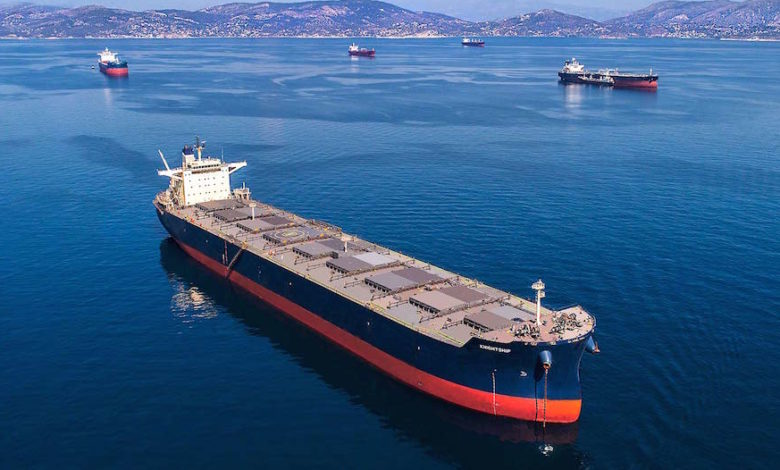Cape surge shows no sign of slowing

Capesize bulkers are now trading for in excess of $31,000 a day, leading a surge across all dry bulk segments with the Baltic Dry Index closing yesterday at 2,064 points – a high not seen since the start of 2014.
Unconfirmed reports yesterday emerged of one exceptional spot fixture concluded for a Black Sea to Asia voyage at $70,000 a day.
Iron ore shipments from Vale in Brazil have spurred the charge in dry bulk with some bullish analysts suggesting the sector is set for further gains.
Norwegian broker Fearnleys noted in its most recent weekly report that there was no sign of activity tapering off for capes or levels to be at risk for the immediate future.
“Whilst Pacific activity is steady but moderate, Vale’s big-style comeback on the Brazil/China run combined with markedly increasing transatlantic volumes make up the main driver, and there is at moment for all practical purposes a tonnage shortage for early stems ex Brazil,” Fearnleys noted, adding: “With a high number of capes, newcastlemaxes and valemaxes going out of service for drydock/scrubber fitting, the following weeks/months are expected to see present climate maintained and further strengthened.”
Joakim Hannisdahl, a shipping analyst with Cleaves Securities, told Splash today: “Although the recent rally in dry bulk earnings are mostly linked to a temporary supply glut in the Atlantic capesize market, we believe the dry bulk shipping segment will experience consecutive annual gains until 2022/23. Thus, we expect one of the longest dry bulk expansionary cycles since the 1740s.”
Hannisdahl noted the increased activity in the secondhand market for the larger dry bulk vessels with analysts at London brokers Alibra saying the past week has been the busiest so far this year for concluded bulker deals.
Cleaves is forecasting cape asset prices to rise another 10% by year-end, in concert with a 20% increase in its dry bulk share index.
Rebecca Galanopoulos Jones, who heads up research at Alibra, told Splash the days of the tradtional summer lull for dry bulk were now consigned to history.
“Over the last few years we have seen the dry market pick up over the summer, this year the seasonal uptick is combined with Vale re-entering the market having been absent for the past six months following the dam incident. This has resulted in increased demand for iron ore cargoes from Brazil to China, a number of period fixtures have been reported over the last few weeks and a shortage of capesize vessels available in the area has prompted interest in these cargoes being split in to smaller ships for short-term fixtures.”
The demise of the summer slowdown is backed up by Splash research which shows that three times in the past six years, the capesize index has hit its yearly high in July and August and during that time capes have never recorded an annual low.
The Alibra analyst did strike a more cautious note on long term prospects however, telling Splash: “In the longer term the outlook for dry bulk may not be as optimistic due to concerns over global economic growth and how this will affect China. Although demand for bulk carriers will continue, there are concerns as to how much the reduction in growth forecasts will impact vessel demand.”
